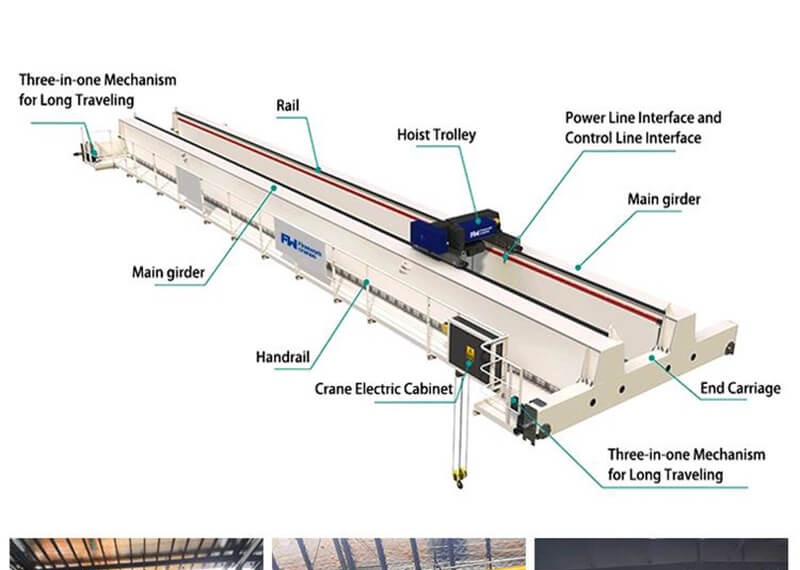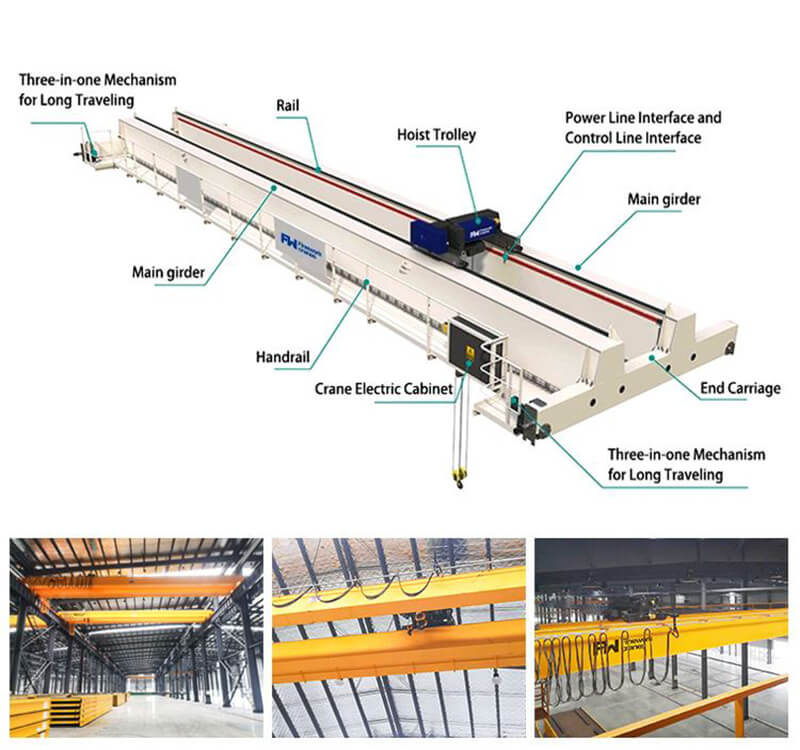
Multi-mass torsion system of transmission mechanism of bridge crane
The transmission mechanism of the bridge crane is a multi-mass torsion system. However, both theoretical calculations and experimental measurements show that in order to estimate the maximum load calculated by the strength of the mechanism, generally speaking, the transmission mechanism is simplified to a dual-mass single-degree-of-freedom system that can meet the requirements of engineering accuracy. In order to understand the problem simply, the damping can also be omitted.
The transmission mechanism of the bridge crane is simplified to the differential equation of motion of a dual-mass single-degree-of-freedom system. Since the relative coordinates are quoted, the degree of freedom of the dual-mass system becomes one. The form of the equation solution is determined by the change form of the excitation and resistance torque. The resistance torque of bridge cranes can generally be regarded as constant. The form of change over time depends on the characteristics of the mechanism's prime mover.

If the drive is an AC wound motor, the starting torque generally decreases linearly with the increase in the speed of the mechanism; if it is driven by a motor, the starting of the mechanism depends on the access clutch. At this time, the driving torque increases with the increase of time, and the increase time is determined by the engagement speed of the clutch. In order to simplify the technology of the dynamic load of the bridge crane mechanism, it can be regarded as a step, that is, the mechanism is subjected to a certain dynamic torque at the moment of starting and then it remains unchanged.
Due to the high natural frequency of the torsional vibration of the rotating system, the time for the torque of the torsional vibration to reach the maximum value is very short, generally one-tenth or one-tenth of the starting time of the mechanism.
Therefore, the error caused by the assumption that the excitation force of the bridge crane remains unchanged in this short period of time is not large. For the AC wound motor, the estimated load based on this assumption is too large. When the mechanism is started with a friction clutch, it increases in a straight line. If it is solved according to the change of the motor speed, more accurate results can be obtained.


